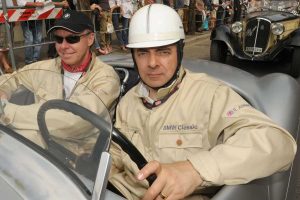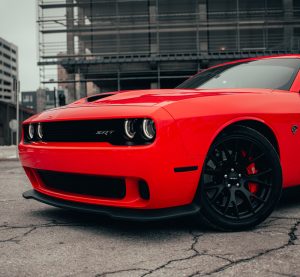Inside HSNY’s Hidden World of Scientific Timekeeping

Inside HSNY’s Hidden World of Scientific Timekeeping
Step inside the Horological Society of New York’s library and you’ll discover more than watchmaking manuals and brand histories. Tucked among volumes on lathes and sundials are studies of jukeboxes, weather vanes, and even the Loch Ness Monster. It’s a collection that widens the lens on horology, revealing a deep and often surprising kinship with the broader world of scientific instruments.
The connection makes sense. Many noted watchmakers also built optical and measuring devices, or sold them alongside clocks and watches. The same skills used to machine precise components for a movement translate naturally to crafting telescopes, thermometers, and barometers. Where there is mastery of miniature metalwork and delicate calibration, there is rarely only a single instrument at play.
Timekeeping and measurement have long converged inside the watch itself. A famous example is the Leroy 01, a tour de force of complications with 25 distinct functions. Beyond calendars and astronomical charts, it includes a thermometer, barometer, altimeter, and hygrometer—an entire micro-laboratory on the wrist. Contemporary literature on the watch even details how its hygrometer operated within the movement: using human hair as a sensor. As humidity rises, hair lengthens; as it drops, hair contracts. This small but measurable change can be translated to an indicator from zero to 100. One historical note even suggests lighter-colored hair performs particularly well in such applications—a charming footnote in the annals of fine watchmaking and meteorology.
Because horology often intersects with science, HSNY’s library is rich in volumes on meteorological instruments. Shelves hold reprints of 19th-century treatises, detailed histories of English barometers, and delightfully specific studies with titles that prompt curiosity and debate. Weather-reading devices—whether handheld, mounted in observatories, or integrated into pocket watches—are part of watchmaking’s story, a testament to how people have measured and managed time, climate, and environment together.
That intersection is also alive in the archive. HSNY preserves the papers of the Henry J. Green Company, a New York maker of meteorological and scientific instruments. James Green, an English immigrant, began producing “philosophical instruments” in Baltimore in 1832 before relocating to New York, and later Brooklyn. His company’s mainstay was the mercurial barometer, whose mercury column rises and falls with atmospheric pressure—a direct window into approaching weather. From there, Green expanded into thermometers for both meteorological and laboratory use, building a reputation that reached major clients including the U.S. Navy and the U.S. Weather Bureau.
The correspondence in the archive reads like a working diary of American science. In 1877, the U.S. Signal Office—at that time part of the War Department—sought volume pricing for instruments, ordering everything from pocket thermometers to observatory-grade barometers. The prices reveal the range and ambition of the era: a few dollars for compact tools, a hundred for the top-of-the-line barometer. In 1883, the Chief Signal Officer ordered custom glass bulbs and tubing for Jolly air thermometers, enclosing a hand-drawn sketch with dimensions. Later letters arrived on ornate Gilded Age letterhead that proudly displayed medals Green earned at international exhibitions, marking the company’s place in a global marketplace of precision.
Not every letter was laudatory. Field science is unforgiving, and the U.S. Geological Survey wrote in frustration when barometer cisterns leaked, rendering instruments temporarily useless and jeopardizing observations. The demand for a quick replacement underscores a timeless truth: craftsmanship and quality control are as crucial as innovation. For all the romance of brass, glass, and hand-engraved scales, these tools were ultimately judged by their reliability in rough conditions.
By the mid-20th century, H. J. Green’s offerings had grown into a full suite of weather instrumentation: barographs, rain and snow gauges, anemometers, wind vanes, thermographs, hygrometers, evaporimeters, and psychrometers. Catalogs of the period neatly distinguish between mercurial and aneroid barometers—the latter doing away with liquid altogether—while presenting wind indicators that range from austere scientific apparatus to ornate vanes shaped for rooftops. Those vanes, often dismissed as decoration, are in fact data instruments, quietly reporting the direction of air masses that drive local weather.
The library also collects the cultural life of scientific devices. A German study of church steeple weathercocks and weather vanes traces their forms through daily life and art history. Its author, Josef H. Schröer, assembled a museum from his own collection; his wife, Ina, wrote of how the pieces joined the family slowly over four decades, eventually claiming a place in her heart. The book explores Christian symbols—roosters atop churches, crosses, and figures such as the archangel Michael—while revealing one of its most endearing surprises: bread baked in the shape of weather vanes. It’s a lighthearted reminder that instruments can be both tools and muses.
Taken together, these holdings show a fuller picture of horology: not just the measurement of hours and minutes, but a broader practice of reading the world. In the HSNY stacks and boxes, watches converse with barometers, thermometers, and vanes; technical ingenuity shares space with art, commerce, and everyday life. The result is a living archive of precision and curiosity—one that invites readers to see timekeeping as part of a larger story about how people make sense of nature.








